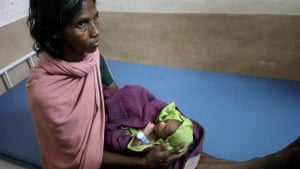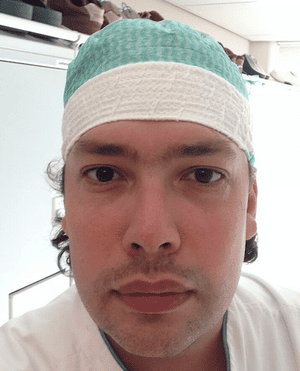The findings of a new NCT report, which revealed that tens of thousands of women were having to seek help at accident and emergency (A&E) departments or with their GP because they cannot reach a midwife, do not come as a surprise to Hannah Harvey.
Harvey has been a midwife for five years. She says that while she and her colleagues care deeply about the women they look after, a nationwide shortage of midwives and government cutbacks to training bursaries mean they often struggle to provide the necessary support to new mums. According to the report by the NCT (pdf) and National Federation of Women’s Institutes, 36% of women who were not able to see a midwife as often as they required postnatally said that it caused them a great deal of concern while almost a third (31%) said that it resulted in a delay of a health problem (for them or their baby) being diagnosed and treated. The Royal College of Midwives (RCM) estimates England has a shortfall of 3,500 midwives.
“It’s really difficult,” says Harvey, who works in West Sussex. “Of course [as midwives] we want to provide round-the-clock care, to spend two or three hours with a new mum teaching her how to breastfeed, and offering the other support she needs, but there’s just not the capacity to do it. We’ve got to look at other ways of helping people.”
It was this challenge, alongside spotting a review that found high numbers of pregnant women use the internet to search for advice, that prompted Harvey to take matters into her own hands. In July 2016, she launched Ask the Midwife, an app that enables mums-to-be to contact midwives for advice.
“I [wanted to] create something where users could ask questions and get a fast response from a midwife, instead of using Google or parenting forums, where you’re not getting professional advice,” says Harvey.
“I saw it as a way of helping the women, [somewhere] they could go and access advice and the extra care they needed and they wanted. It’s also a platform to alleviate the pressure on the NHS and the midwives working in the community and the hospitals, who don’t have the time to spend with people who might want a bit more help with their newborn baby.”
Harvey initially used £10,000 of her own savings and raised £50,000 from friends and family to help develop and launch Ask the Midwife on iOS last year. Eight months after starting the business, the app has 4,000 users across the UK, and a network of 45 registered midwives. Harvey initially found the midwives by advertising for consultant positions, even receiving 500 applications in three days. Each midwife gets paid 25% commission per question or chat they answer. Many of the midwives still work for the NHS but use Ask the Midwife to earn extra money. Harvey estimates that 15-20% of conversations need to be escalated to an in-person consultation.
For the expectant mothers, there’s a small charge (from 99p) to ask a question, increasing to £19.99 a month for support during the nine months of pregnancy and up to 12 weeks postnatally. This includes unlimited use of the “ask” and live chat services, with responses from a registered midwife promised within an hour. Midwives are available seven days a week, 14 hours a day, with plans to make it a 24-hour service in the near future.
“We get a lot of early pregnancy questions, after someone goes to their GP but before they have their first midwife appointment at eight to 10 weeks. And then, postnatally, we get a lot of breastfeeding and feeding questions. If you’ve never had a newborn baby before, you don’t know what is normal.”
Digital technology is rising in popularity among expectant mothers. According to the NCT’s study, 34% of women are choosing to use an app to support their pregnancy – two thirds (65%) used apps to track milestones, such as when the baby kicked or to track contractions, and a third (32%) used digital technology to access information about diet, lifestyle or health issues. Popular apps include BabyBump, What to Expect (from the authors of What to Expect when you’re Expecting), and My Pregnancy Today, although the majority available have been developed in the US.
Jacque Gerrard, the RCM’s director for England says such digital technology can be useful, as long as the advice is backed up by evidence-based information and carries a health warning. “Women have access to mobile phones, the internet and they want instant answers, so I think [such digital technology] is a positive step,” she says. “But what I would say is it has to be used with caution. Sometimes women do need access to a midwife or a doctor and that’s got to be the first point of contact. The NHS does provide access to a midwife 24/7, 365 days of the year, no matter where you are in the country.” The RCM is itself currently developing a hub for pregnant women, including a live help function.
Harvey is in talk with NHS trusts who are considering piloting her service in their areas, and says she’d eventually like to be able to offer the service for free – although finding funding will be the first priority; she’s currently plotting an investment round with angel investors. There are also plans to expand into other countries once the market is established in the UK.
But it’s been a learning curve for the midwife, who still juggles working night shifts with developing the business. “It’s completely different to my NHS work,” she says. “I’ve never been an entrepreneur, but the fact that I’m getting that feedback from people saying this is something they want is keeping me going and giving me that drive and determination to make sure it succeeds.” Harvey says the feedback so far has been very positive and the app recently won best parenting app and best educational app at the Mumii Family awards.
“[Entrepreneurship] has been the best experience I’ve had,” she says. “I was at a baby show in London recently and somebody said she’d used my app in early pregnancy and it was the best money she’d ever spent. She had been really worried she was losing her baby, her GP hadn’t reassured her and she didn’t know where to go. She had a 10-minute chat with one of the midwives and felt really reassured. Then she realised I was the one she’d spoken to and she burst into tears, giving me a hug. That for me felt like the icing on the cake – this is why I’m doing it, this is why I’ve put all the hard work in.”
Sign up to become a member of the Guardian Small Business Network here for more advice, insight and best practice direct to your inbox.
The app that aims to tackle the chronic NHS midwife shortage






